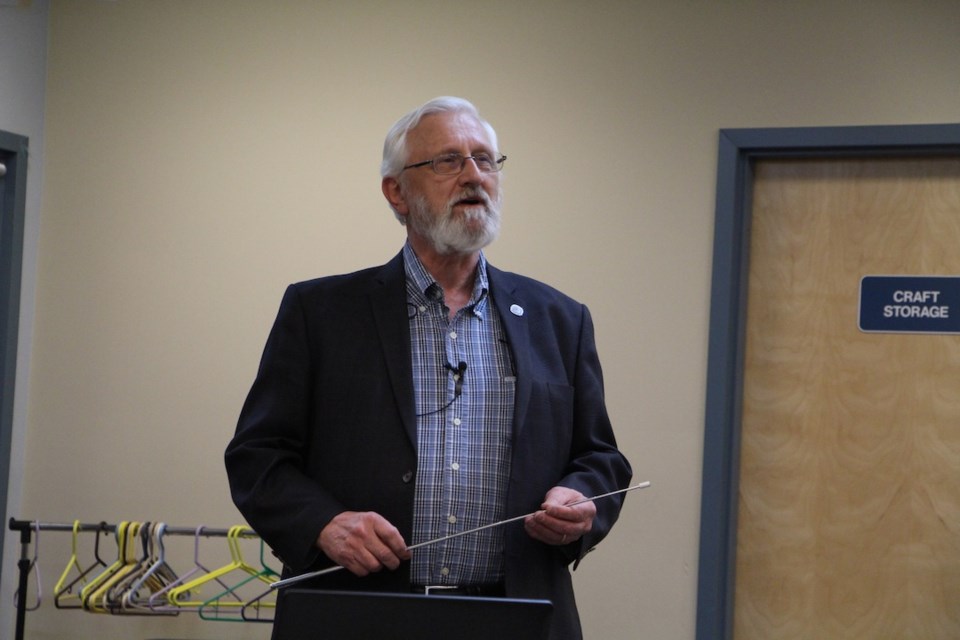Once the local flour mill was a hub in the community, as farmers dropped off their grain and people picked up the flour they needed for their baking. Now, there are three left, and the only brick one stands in Yorkton. There is an opportunity to do something on the site, but what should it be.
The first meeting exploring that potential was held on May 9, with Frank Korvemaker, construction historian, archivist and archeologist, talking about the history of mills in the province and what people trying to preserve an old building have to keep in mind when making it a site to visit. Speaking from experience with the Bell Barn and the Claybank Brick Plant, he touched on things that might not be immediately obvious, like how to keep a site accessible and ways to keep it worth visiting even when any interpretive center is closed.
The relative rarity of the mill is one of the opportunities for Yorkton, because instead of being important to just Yorkton itself it becomes a site that’s unique provincially, being both the oldest mill and the only one made of brick in the province.
“We have an opportunity to preserve these three mills... It’s important not only to your own community but to the people of Saskatchewan. That’s why it doesn’t hurt to expand your fundraising campaign beyond Yorkton.”
The work already done on the site is what needed to happen to get people on board with mill preservation, said Korvemaker, because when a building is an ‘eyesore’ that makes it much harder to get people on board to preserve it. Site improvements are convincing people of the value of the property, and that’s generating interest in what happens next at the site. A full room at the Yorkton Public Library proved that there are people invested in what happens next.
“It looks like something positive is happening in Yorkton all around the Mill, and it is.”
The main challenge that the Yorkton Brick Mill Heritage society will face is the same one that anyone in the business of preserving old buildings faces, that being nature and it’s desire to turn bricks and wood to dust. While some mills have been intentionally demolished, said Korvemaker, the majority have been destroyed by unintentional fire, and that’s still the biggest risk the mill will face, even as a brick building a large enough fire could easily destroy it. In his presentation, he spoke a bit about how it would be a good idea to have a sprinkler system in the mill, and that plans for added building should have fire walls as part of the design.
“It’s a difficult situation. Eventually, mother nature gets them all, whether it’s 100 years, 500 years, or the case of Notre Dame in Paris, 1,500 years, she always wants to win. I like to thwart her, I like to make her earn her dollars.”
Larry Pearen with the Yorkton Brick Mill Heritage Society said that the meeting showed that there is lots of interest in the community, a positive sign for the mill’s future as they work out ideas for the next step down the road.
The next meeting will be June 13, talking about establishing goals and developing a strategic plan, looking at the mill from a business perspective.



